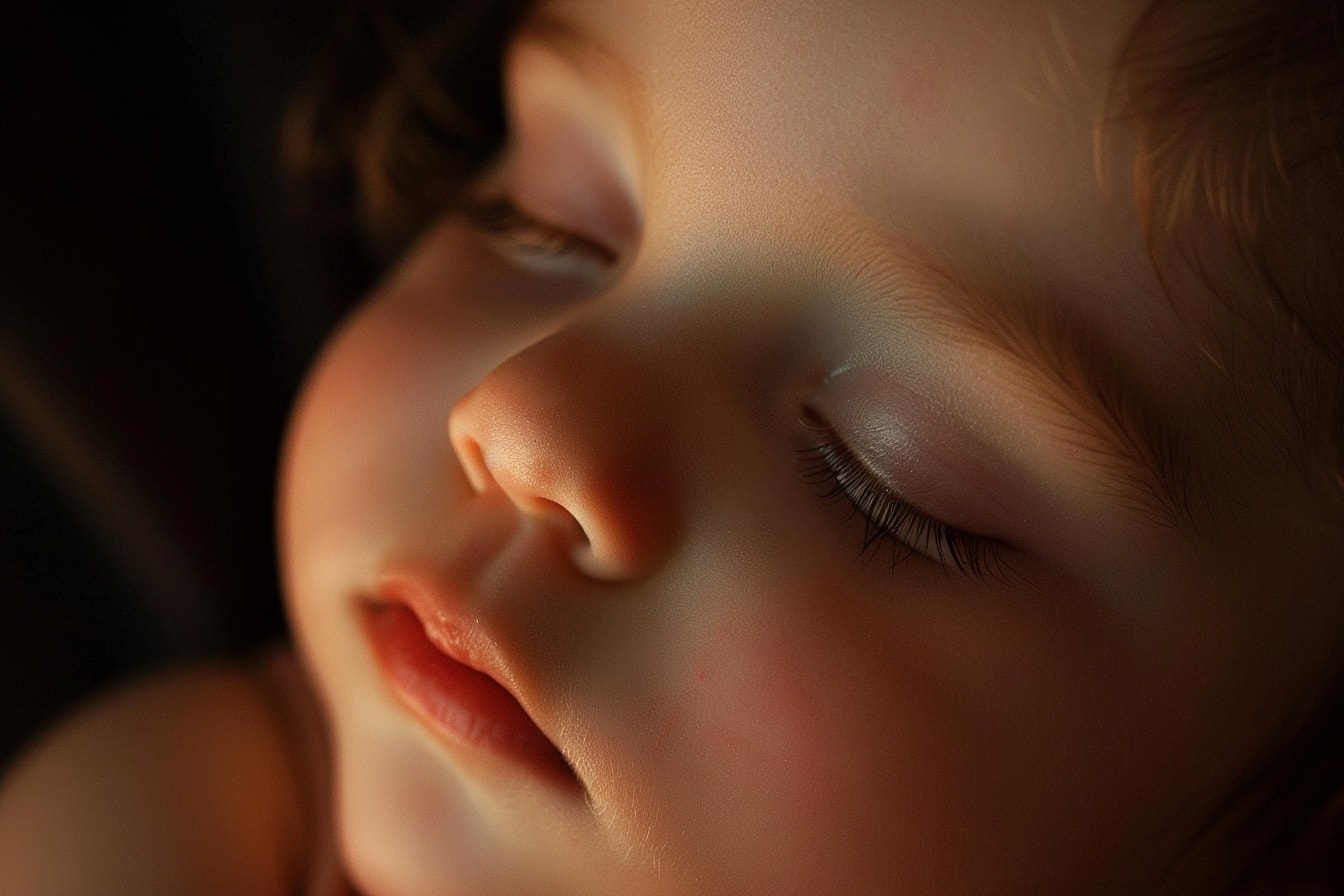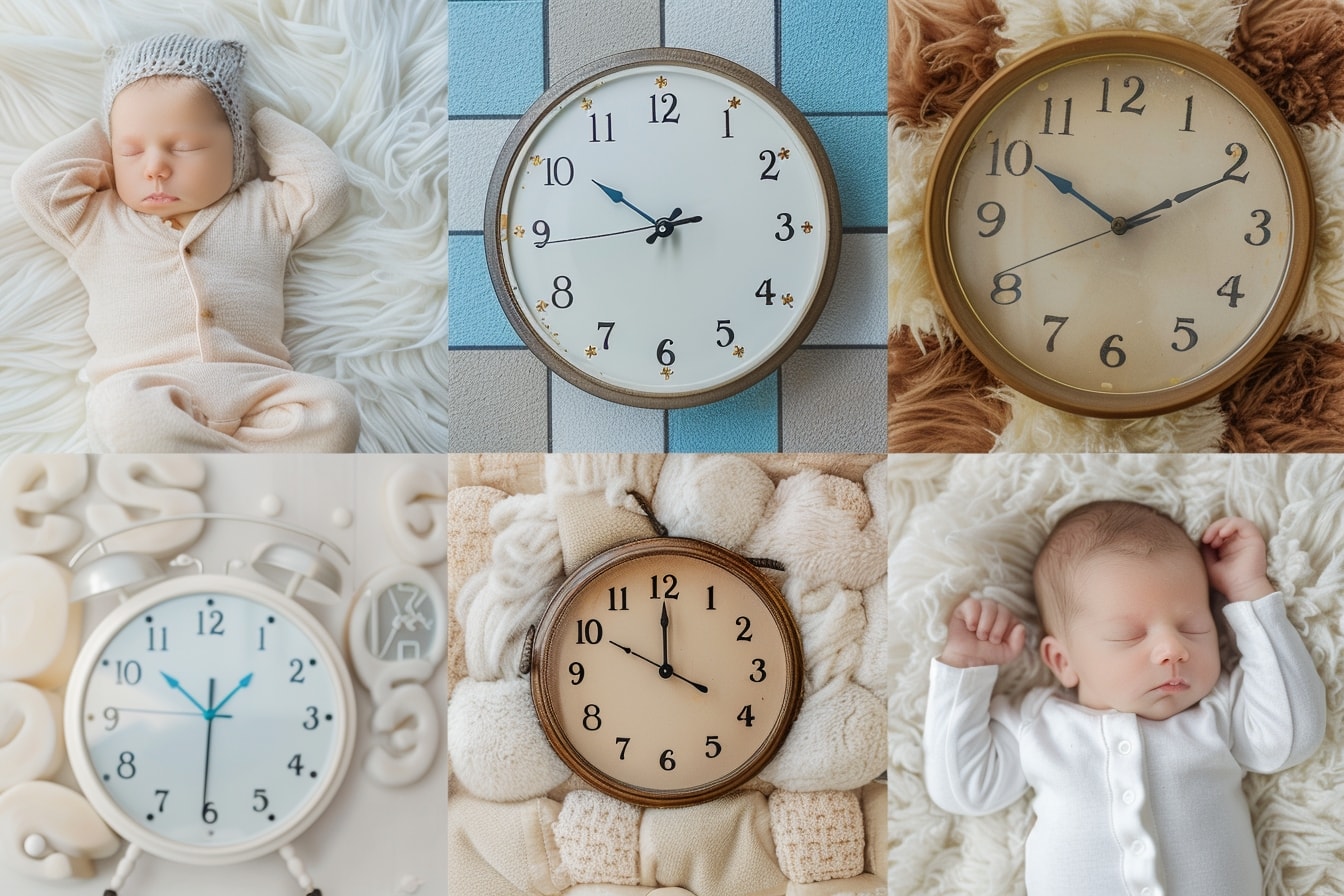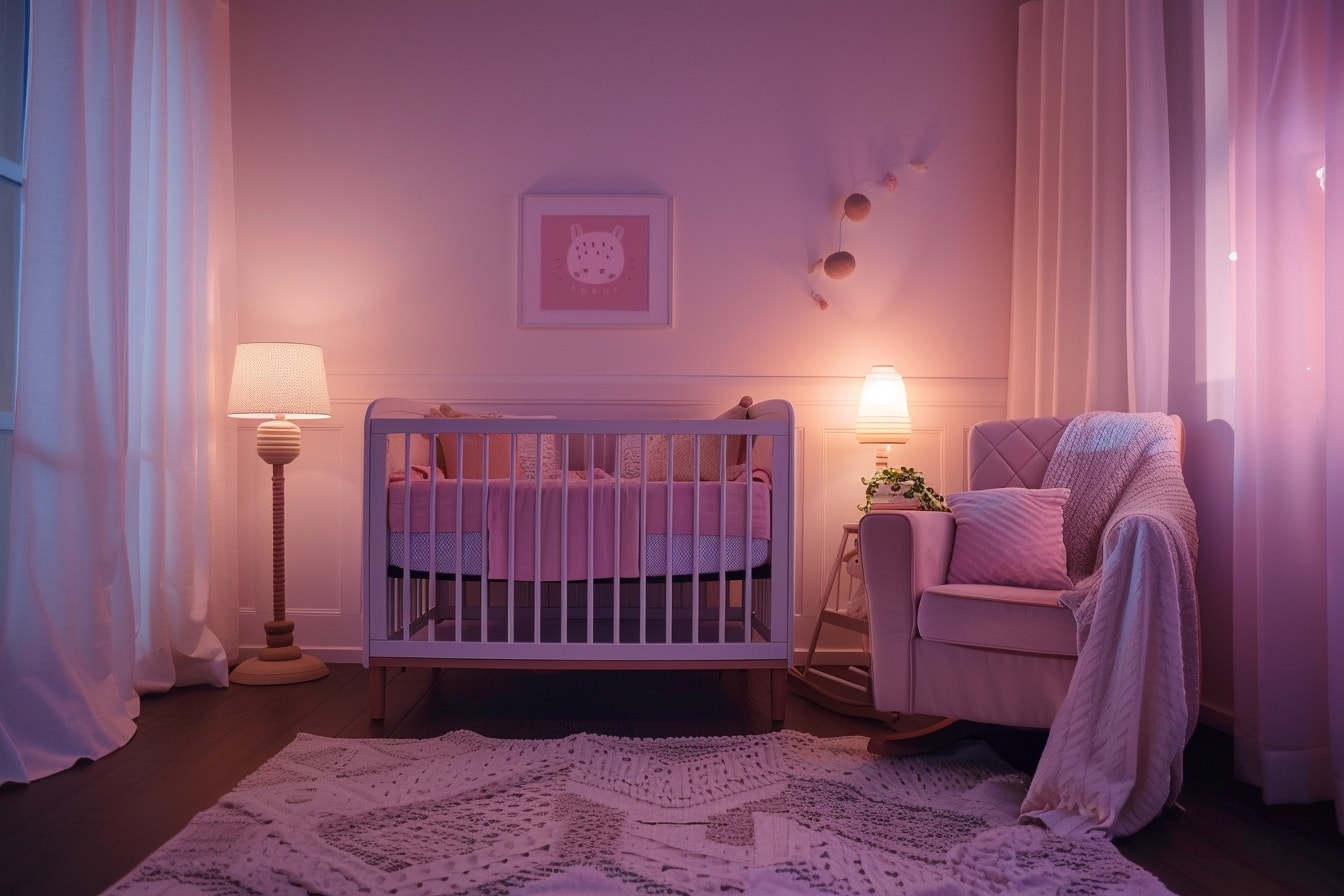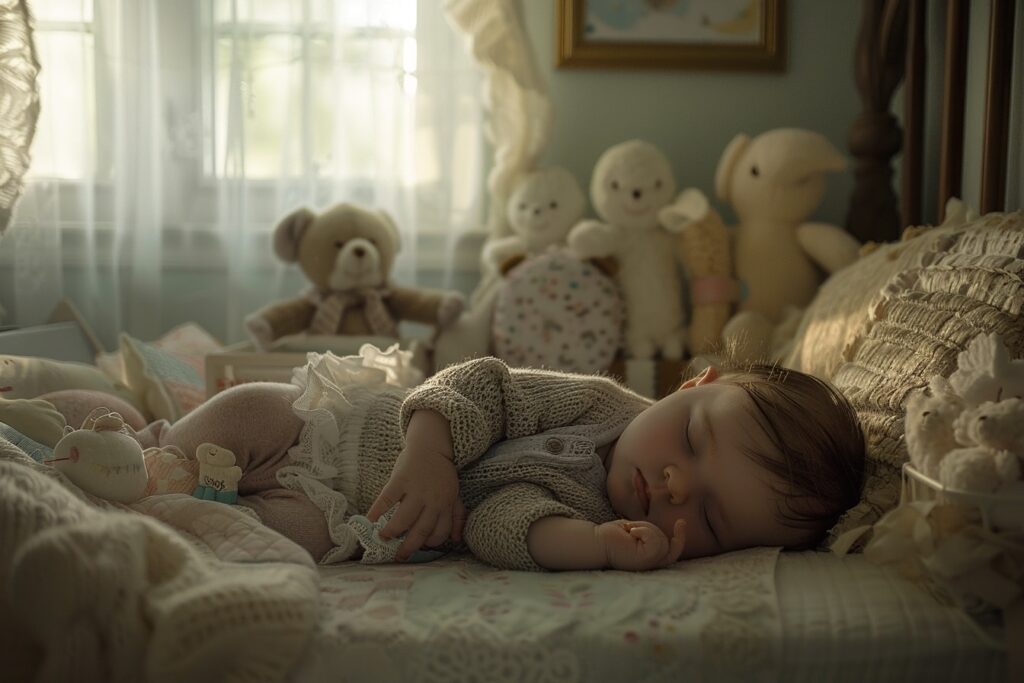Table of Contents
ToggleThe Science of Sleep: How Rest Supports Baby’s Brain Development
Have you ever wondered why babies seem to sleep so much? It’s not just about giving exhausted parents a break (though that’s certainly a perk!). Sleep plays a crucial role in shaping your baby’s brain, laying the foundation for their cognitive development and overall well-being.
As a new parent, navigating the world of baby sleep can feel overwhelming. From deciphering your baby’s sleep cues to grappling with sleep regressions, it’s easy to feel like you’re in a constant state of sleep deprivation. But understanding the science behind sleep can empower you to make informed decisions and set your baby up for success.
In this article, we’ll explore the fascinating connection between sleep and brain development in babies. Drawing on both scientific research and personal anecdotes, we’ll uncover the mysteries of the infant sleep cycle and discover how rest supports your baby’s cognitive growth. So grab a cup of coffee (or tea, if you’re trying to cut back on caffeine) and let’s dive in!

Understanding the Sleep Cycle
Let’s embark on a journey into the fascinating world of the infant sleep cycle. Just like adults, babies experience different stages of sleep throughout the night, each serving a unique purpose in their development. By understanding these stages, you can better decode your baby’s sleep patterns and provide the support they need for optimal rest.
First up, we have REM (rapid eye movement) sleep. This is the stage where dreams occur and brain activity is at its peak. For babies, REM sleep is especially important as it’s believed to play a crucial role in memory consolidation and cognitive development. So when your little one is twitching and squirming in their sleep, it’s a sign that their brain is hard at work.
Next comes non-REM sleep, which is divided into three distinct phases: N1, N2, and N3. During N1, your baby is in a light sleep state, easily roused by external stimuli. This is often when you’ll see those adorable little sighs and smiles as they drift off to sleep. In N2, your baby transitions into a deeper sleep, characterized by slower brain waves and decreased muscle activity. Finally, N3 is the deepest stage of sleep, where the body repairs and regenerates tissues, and growth hormones are released.
But here’s where it gets interesting: unlike adults, babies spend a significant amount of time in REM sleep. In fact, newborns can spend up to 50% of their sleep cycle in REM, compared to around 20-25% for adults. This is thought to be because their brains are rapidly developing, and REM sleep provides the ideal environment for neural connections to form.
So what does this mean for you as a parent? Understanding the intricacies of the sleep cycle can help you anticipate your baby’s needs and create a sleep-friendly environment. By establishing a consistent bedtime routine and ensuring they have a comfortable sleep space, you can support your baby’s brain development and set them up for a lifetime of healthy sleep habits.

Common Sleep Challenges for Babies
Ah, the mysterious world of baby sleep – a topic that can leave even the most seasoned parents scratching their heads in bewilderment. From midnight wakings to naptime battles, it’s no secret that babies can be unpredictable when it comes to getting their zzz’s. But fear not, dear parents, for you are not alone in this sleep-deprived journey. Let’s shine a light on some of the most common sleep challenges faced by babies and explore strategies for overcoming them.
- Night Wakings: Perhaps one of the most dreaded sleep disruptions for parents, night wakings are a natural part of infant sleep patterns. Babies have smaller stomachs and need to eat more frequently, which means they may wake up hungry during the night. Additionally, factors like teething, growth spurts, and developmental milestones can also contribute to night wakings. To address this challenge, consider implementing a soothing bedtime routine and ensuring your baby is well-fed before bedtime. Gradually teach them to self-soothe and fall back asleep independently, promoting longer stretches of uninterrupted sleep.
- Sleep Regression: Just when you thought you had finally cracked the code on your baby’s sleep routine, along comes a sleep regression to throw everything out of whack. Sleep regressions typically occur around certain developmental milestones, such as learning to crawl or teething, and can disrupt your baby’s sleep patterns for a few weeks or even months. While it may be tempting to resort to old sleep habits during these regressions, consistency is key. Stick to your established bedtime routine and offer extra comfort and reassurance to help your baby navigate this challenging phase.
- Naptime Battles: Ah, the classic struggle of getting your baby to nap during the day. Whether they’re fighting sleep with every ounce of their being or waking up the moment you try to transfer them to their crib, naptime battles can leave both parent and baby feeling frazzled. Establishing a consistent nap schedule and creating a calming sleep environment can help set the stage for successful naps. Avoid overstimulation before naptime and be patient as your baby learns to associate their crib with restful sleep.
- Bedtime Resistance: As the sun sets and bedtime approaches, some babies seem to transform into tiny sleep ninjas, determined to evade the inevitable. Bedtime resistance can manifest in various forms, from crying and fussiness to outright defiance. To tackle this challenge, establish a soothing bedtime routine that signals to your baby that it’s time to wind down. Dim the lights, read a bedtime story, and engage in quiet, calming activities to prepare your little one for sleep. Consistency and patience are key as you help your baby learn to embrace bedtime as a peaceful transition to dreamland.
Remember, every baby is unique, and what works for one may not work for another. Be patient with yourself and your little one as you navigate these sleep challenges together. With time, patience, and a whole lot of love, you’ll find your rhythm and create a peaceful sleep environment that supports your baby’s growth and development.

Trends in Baby Sleep Patterns
As we delve deeper into the realm of baby sleep, it’s essential to stay attuned to the ever-evolving trends shaping how our little ones rest. From the rise of technology to shifting cultural norms, these trends can have a significant impact on the sleep habits of infants and their families. Let’s take a closer look at some of the trends in baby sleep patterns and explore their implications for parents and caregivers.
- Technology’s Influence: In today’s digital age, technology permeates every aspect of our lives – including how we approach baby sleep. From smartphone apps that track sleep patterns to high-tech baby monitors with video capabilities, parents now have a plethora of tools at their disposal to monitor and manage their baby’s sleep. While these technological advancements offer convenience and peace of mind, they can also contribute to information overload and heightened anxiety for parents. It’s essential to strike a balance between utilizing technology as a helpful tool and trusting your instincts as a parent.
- Co-Sleeping Controversy: The practice of co-sleeping, where parents and infants share a bed or sleep in close proximity, has long been a topic of debate among parents and healthcare professionals. While some cultures have embraced co-sleeping as a natural and nurturing way to bond with their babies, others caution against the potential risks, such as suffocation or Sudden Infant Death Syndrome (SIDS). As a result, we’re seeing a shift in attitudes towards co-sleeping, with more parents opting for safer alternatives like room-sharing or utilizing bedside sleepers.
- Emphasis on Sleep Hygiene: With growing awareness of the importance of sleep for overall health and well-being, there’s been a renewed emphasis on promoting good sleep hygiene from an early age. Parents are increasingly mindful of creating a sleep-friendly environment for their babies, incorporating strategies such as establishing consistent bedtime routines, maintaining a comfortable sleep environment, and minimizing screen time before bed. By prioritizing sleep hygiene, parents can lay the groundwork for healthy sleep habits that will benefit their babies well into adulthood.
- Cultural Influences: Cultural beliefs and practices also play a significant role in shaping baby sleep patterns. In some cultures, co-sleeping is the norm, while in others, babies are expected to sleep independently from an early age. Additionally, cultural attitudes towards crying and soothing techniques can vary widely, influencing how parents respond to their baby’s sleep needs. By understanding and respecting these cultural differences, parents can navigate the diverse landscape of baby sleep with sensitivity and empathy.
As we navigate these trends in baby sleep patterns, it’s essential to approach the topic with an open mind and a willingness to adapt. Every baby is unique, and what works for one may not work for another. By staying informed, trusting your instincts, and prioritizing your baby’s well-being, you can create a nurturing sleep environment that supports their growth and development.

Creating a Sleep-Optimized Environment
Picture this: a cozy, tranquil space where your baby can drift off to sleep peacefully, surrounded by comfort and serenity. Creating a sleep-optimized environment is not just about setting the stage for a good night’s rest – it’s about fostering a sense of calm and security that allows your little one to thrive. Let’s explore some strategies for transforming your baby’s sleep space into a haven of tranquility.
- The Power of Darkness: Light plays a crucial role in regulating our sleep-wake cycles, and babies are especially sensitive to changes in light. To promote restful sleep, ensure your baby’s sleep environment is dark and conducive to sleep. Invest in blackout curtains or shades to block out any unwanted light, creating a cozy cocoon where your baby can drift off to dreamland undisturbed.
- Temperature Control: Just like Goldilocks searching for the perfect porridge, babies need their sleep environment to be just right when it comes to temperature. Aim for a comfortable room temperature of around 68-72 degrees Fahrenheit (20-22 degrees Celsius) to prevent overheating or chilling during the night. Dress your baby in breathable sleepwear and use lightweight blankets or sleep sacks to keep them snug without overheating.
- White Noise Magic: While silence may be golden for some, babies often find comfort in the gentle hum of white noise. White noise machines or apps can help drown out distracting sounds and create a soothing sleep environment for your little one. Experiment with different sounds, such as ocean waves or rainfall, to find the perfect white noise setting that lulls your baby into blissful slumber.
- The Comfort Factor: When it comes to creating a sleep-optimized environment, comfort is key. Choose a firm and supportive mattress for your baby’s crib, topped with a fitted sheet that’s free of any loose bedding or soft objects. Opt for breathable fabrics like cotton for your baby’s sleepwear and bedding to prevent overheating and promote airflow. And don’t forget to fluff up their favorite lovey or stuffed animal for extra snuggly comfort!
- Soothing Scents: Harness the power of aromatherapy to create a calming atmosphere in your baby’s sleep space. Lavender, chamomile, and vanilla are all known for their soothing properties and can help promote relaxation and sleepiness. Consider using a gentle lavender-scented room spray or a few drops of essential oil in a diffuser to infuse the air with a subtle, sleep-inducing aroma.
By incorporating these elements into your baby’s sleep environment, you can create a peaceful sanctuary where sleep comes naturally. Remember, consistency is key, so stick to your established bedtime routine and be patient as your baby adjusts to their new sleep surroundings. With a little love and attention to detail, you can transform your baby’s crib into the ultimate sleep haven, ensuring they get the rest they need to thrive.

Expert Insights: Interview with Pediatric Sleep Specialist
Who better to turn to for guidance on baby sleep than a pediatric sleep specialist? I had the privilege of sitting down with Dr. Sarah Johnson, a renowned expert in pediatric sleep medicine, to glean insights into the mysteries of infant sleep and how parents can navigate the challenges that come with it. Here’s what she had to say:
- The Importance of Routine: According to Dr. Johnson, establishing a consistent bedtime routine is crucial for promoting healthy sleep habits in babies. Babies thrive on predictability, she explains. Having a consistent bedtime routine helps signal to your baby that it’s time to wind down and prepare for sleep. Dr. Johnson recommends starting your bedtime routine around 30 minutes to an hour before your baby’s anticipated bedtime, incorporating calming activities such as a warm bath, gentle massage, or bedtime story.
- Understanding Sleep Cues: One of the biggest challenges for parents is deciphering their baby’s sleep cues and knowing when they’re ready for bed. Dr. Johnson advises parents to pay attention to subtle signs that indicate their baby is tired, such as rubbing their eyes, yawning, or becoming fussy. Babies have their own unique sleep cues, she says. By tuning into your baby’s signals and responding accordingly, you can help them transition to sleep more smoothly.
- The Myth of Sleep Training: When it comes to the contentious topic of sleep training, Dr. Johnson urges parents to approach it with caution. Contrary to popular belief, there’s no one-size-fits-all approach to sleep training, she asserts. Every baby is different, and what works for one may not work for another. Dr. Johnson emphasizes the importance of responsive parenting and meeting your baby’s needs, whether that means offering comfort and reassurance during night wakings or gradually teaching them to self-soothe.
- Addressing Sleep Safety: As a pediatric sleep specialist, Dr. Johnson is passionate about promoting safe sleep practices to reduce the risk of Sudden Infant Death Syndrome (SIDS) and other sleep-related accidents. It’s essential for parents to create a safe sleep environment for their babies, she emphasizes. This means placing your baby on their back to sleep, using a firm mattress with a fitted sheet, and avoiding loose bedding or soft objects in the crib. Dr. Johnson also recommends room-sharing with your baby for the first six months to a year of life to facilitate breastfeeding and nighttime bonding.
Dr. Johnson’s insights shed light on the complexities of baby sleep and provide valuable guidance for parents navigating the ups and downs of infancy. By incorporating her expert advice into their parenting approach, parents can feel more confident in their ability to support their baby’s sleep needs and lay the foundation for a lifetime of healthy sleep habits.
As we come to the end of our journey into the science of sleep and its impact on baby brain development, I’m reminded of the profound importance of rest in the early years of life. From understanding the intricacies of the sleep cycle to navigating common challenges and trends, we’ve explored a wealth of information aimed at helping parents create a nurturing sleep environment for their little ones.
But beyond the practical tips and expert insights lies a deeper truth: the bond between parent and child is strengthened through the shared experience of sleep. In the quiet moments of the night, as you rock your baby to sleep or soothe their cries in the darkness, you’re not just ensuring their physical well-being – you’re nurturing their emotional and cognitive growth as well.
So as you embark on this sleep-filled journey with your baby, remember to trust your instincts, embrace the unpredictability, and savor the precious moments of closeness and connection that sleep brings. And when the nights feel long and the challenges seem insurmountable, know that you’re not alone. Reach out to your support network, seek guidance from trusted professionals, and remember that every sleepless night is a testament to the love and devotion you have for your little one.
As we bid farewell to this exploration of baby sleep, I leave you with one final thought: sleep is not just a necessity – it’s a gift. A gift that allows your baby to grow, thrive, and explore the world with curiosity and wonder. So cherish each precious moment of sleep, knowing that you’re laying the foundation for a lifetime of health, happiness, and dreams fulfilled.
Want to take your knowledge to the next level? Check out these must-read articles:
- The ABCs of a Growth Mindset: Early Learning and Literacy
- Music and Movement: Enhancing Cognitive Growth Through Rhythm
Organize your baby’s wardrobe with our baby clothes closet organizer products! Our organizers are designed specifically for baby clothes. Get your baby’s clothes neat and tidy with our selection of organizers – shop now!
Step into Sue Brown's World of Baby Care, where you'll find a treasure trove of knowledge and wisdom waiting to be explored. Sue's dedication to providing accurate and up-to-date information on baby care shines through in every article, blog post, and resource she shares. From newborn essentials to sleep training tips, breastfeeding advice to nurturing your baby's development, Sue covers a wide range of topics that are essential for every parent to know. Her warm and compassionate approach creates a sense of community and reassurance, making her website a safe haven for parents seeking guidance and support. Let Sue Brown be your partner in this beautiful journey of parenthood, as she empowers you to create a loving, nurturing, and thriving environment for your little one.
- Indoor Air Quality for Infant Respiratory Health - October 20, 2025
- Positive Discipline Foundations: Setting the Stage From Infancy - October 18, 2025
- 2025’s Most Innovative Baby Products Worth the Investment - October 16, 2025



